Whether he’s shooting high-end luxury products or intimate portraits, Richard Weinstein is always searching for ‘the soul’ of an image. He talks to Rob Ditessa about his remarkable career.
Recently Richard Weinstein was criss-crossing Victoria by road and air on a major 14 day multi-location shoot which he says has marked a turning point in his career. It’s a project which involves adding a more ‘human’ element to his work, which up to now has distinguished itself with the creation of highly skilled images involving a range of commercial products. At his studio (in Alexandria, Sydney) in a lengthy and generous conversation Weinstein explained about the assignment, sidestepping too much detail because it was still under wraps.
Essentially the project was about capturing portraits of real people who have recovered from an illness using a particular medication, for a book of ‘good news’ stories the pharmaceutical maker plans to publish about the efficacy of the medication. The job dovetailed with a desire to develop his professional practice, moving direction, for instance, to include health care. “It’s more of a personal motivation to start producing at this stage in my career images that I feel are more worthwhile, that can change people’s perceptions, and lives in some
way. I want to create images that make a difference in people’s lives,” he says.
Is there a conflict between the sales approach and the more humanistic approach? “This particular project is more about information. It isn’t really a hard sell, and, no I don’t feel there is a conflict if you do work with integrity, and work with good people who have the right head space. Even though a lot of my work sells product, I’m just looking for something that’s a bit more soulful, and beneficial.”
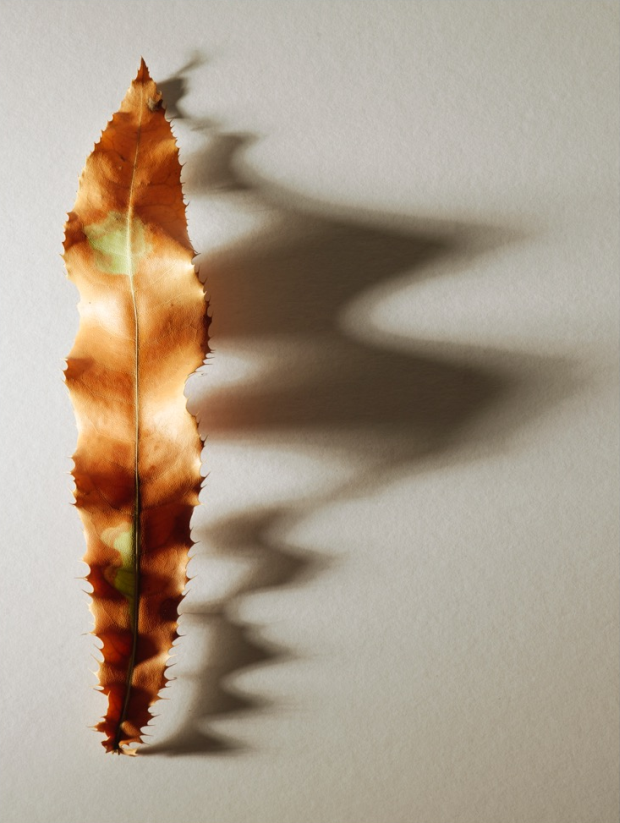
One of a series shot for a personal exhibition in collaboration with a large format printing company, Easy Digital and TO Design. Some images were printed over three metres in length. The images were exhibited at Weinstein’s gallery in Sydney.
Early career moves
It’s his capacity to see and then frame deeper dimensions in a scene – what he describes as something “more soulful” – that has lead Weinstein to his success in advertising, specialising in clothing, jewellery, and food. Listening to Weinstein tell his career story, it emerges that this capacity inspired his interest in photography as a youngster. He says that at 13 he discovered a wonderful new way to look at the world through photography. He liked playing with light through a camera, and meeting people. Photography allowed him to roam the streets and approach strangers. He enjoyed the creativity and technical process of developing film and when he saw his photographs come to life in a darkroom, he was captivated.
“I found that I was also able to sell my prints to school sport teams, model portfolios, and birthday parties, which helped pay for paper and chemicals and the slow increase in my camera equipment and lenses.”
His first camera was a Russian-made Zenit 35mm that his grandfather’s brother had brought over from Russia to South Africa when the family had migrated. The young Weinstein saved money as quickly as he could to buy a Nikon EM 35mm SLR with a 50mm lens, beginning a long-term fondness for the Nikon brand. With the support of his family, who appreciated the arts, and who let him use one of their garden sheds for a darkroom, he had the freedom to pursue his interest. In the following years they also supported his studies. With surprising clarity, and confirming his fondness for photographic technique, he remembers all the details of the three-year intensive course he completed at Pretoria Technical College.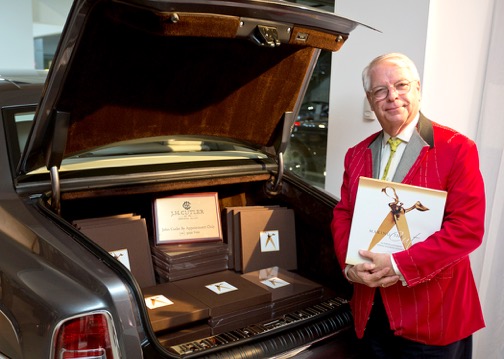
John Cutler at launch of ‘Making the Cut’, a volume about the bespoke tailor, for which Richard Weinstein shot all the images.
After working for three years apprenticed to Pieter De Ras, where he learned “how the profession really operates and how you should conduct yourself”, Weinstein opened his own business, taking out a loan, buying Elinchrom flash heads and a studio stand, in a shared studio with photographer David Braun, in an arrangement which continued successfully for four years. Weinstein’s passion was social documentary, and news photography. It was a volatile time in South Africa, and Nelson Mandela (who would soon be President) had just been released. Weinstein was starting a young family and he decided to focus more on studio photography, and advertising, for a ‘9-to-5’ type of life. While enjoying studio work, he started to pick up some good clients in those early days, including work for Dulux paints, and Cosmopolitan magazine.
“I felt I only became a photographer when I bought my first 4x5 Sinar F. I have worked with Hasselblad, Mamiya RB’s 6x7 and Bronica 6.45, and my all-time favourite, the Sinar P2 with Schneider and Rodenstock lenses. Today it’s all about lens quality and a good sensor. I’m currently using a medium-format Leaf Aptus back with Phase camera bodies shooting tethered into Capture One, and for 35mm I use the Canon 1D X and I always have my Fuji X100s on hand or in the car. My lighting consists of Broncolor and Elinchrom flash packs and mono heads, and Dedo tungsten lights. I rarely use Speedlights,” Weinstein explains.
Tie on blue shirt. Mamiya Leaf Aptus 33, 120mm focal length, 1/60s @ f/8.
Film to digital
Weinstein recalls, “We always used to joke that you were never a real photographer until you owned a view camera because of the movements, the tilts and the perspectives. In the studio, and in advertising work, the set ups were slower with the large view camera, and you only had a few sheets of film, and a few Polaroids. So, technically you had to be very good, to get it pretty much perfect. There was no Photoshop for re-touching. You worked a lot harder at getting the image correct because that piece of film is what went to your client. The process was slower, the labs took a couple of hours to process film, and there was greater technical concern all the time to achieve excellence rather than blast away a thousand images and think of the fix later. It was also very expensive to re-do things. You had to get it right in camera.”
Currently his favourite piece of equipment is the Fuji X100s, “a beautifully designed old-school camera with modern features that is light, silent, and fun to use for my street photography and personal work.”

Ring on flower. Phase 645 Leaf Aptus II, 120mm focal length, 1/80s @ f/5.6.
Weinstein’s signature style is distinguished by his attention to detail and use of light to create depth, texture, and focus. It is a ‘film’ style, he suggests, meaning he does not run many effects through his work, that his still life has a strong graphic feel, and that he captures sensitive moments in his portraits. He says, “It’s about looking. When I am photographing product in a creative way, I tend to want to look for those unique angles that bring out the characteristic of form, design, perspective, but lighting becomes so important to bring out the texture of the three dimensionality of the real world into the two dimensions of the photograph. If you have sensitivity to lighting, especially texture, you’re going to achieve that result.”
Basic lighting & technique
To start out, Weinstein suggests using a one-light set up with reflectors, mirrors and blacks to correct as much as possible of the image. Use more if you really need to, but with five or six it’s possible to lose track of what each light is doing, he says. It’s very important to look through the camera while someone else is moving the light, higher or lower, or around an object, because a metre or even a centimetre shift in light and perspective can make it a different picture. Sometimes the smallest of changes can make the biggest differences.
He says, “Don’t always go back to the same lighting set up, or the three-to-one ratio, or the type of reflectors or shapers you use. I love shadow, and if I could make my shadows more prominent and blacker in all my images I would, but of course I am often working for clients where it doesn’t suit their style. I love ‘mood’ in my work. I love the darks and the blacks and the negative space.” Two insights he offers to newcomers are to study the sun from sunrise to sunset to learn about distance and direction, and to attend lighting suppliers’ workshops and demonstrations. He wonders why more people don’t attend, as he says he is still learning so much from them.
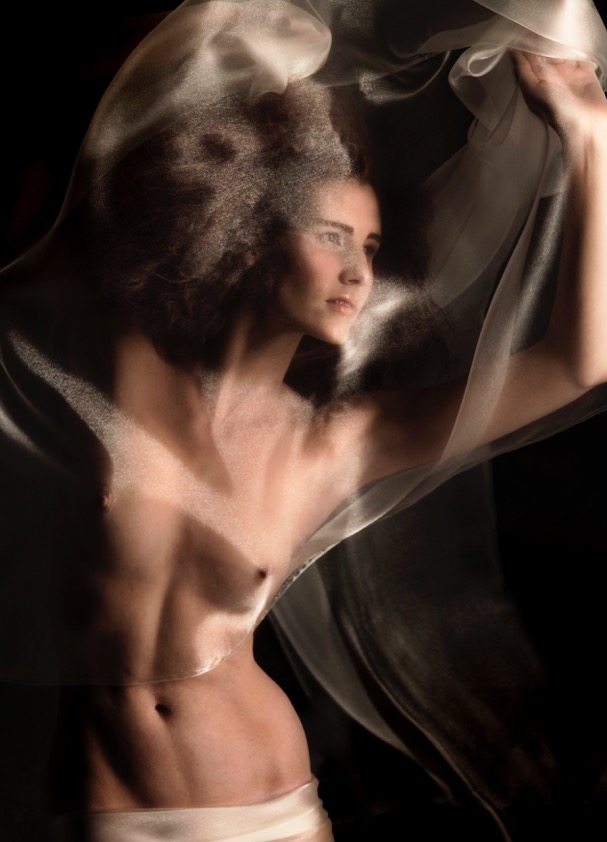
Girl in silk. Mamiya Leaf Aptus 22, 120mm focal length, 1/80s @ f/11.
He also says that control of depth of field is vital. “It’s about using your lenses correctly, and working out which lenses to use. With focus, lighting, and composition you start to bring in all the areas that makes up photography. Your eye will always go to the lightest area in an image first, and will also look for the most focused area. So you can play with those two tools to direct someone’s movement around the page. You look for what’s in focus, and then you look for what’s bright initially, and then you start looking around. But it’s about the lighting.” That thought leads to the topic of black and white photography. Says Weinstein, “I have always loved it, from an early age. Black and white shows us the world in an altered reality. We see in colour, so we don’t see the world in tones. When we see an image in black and white of what we know is the real world, it gives us a beautiful tonal representation, the world, but in a slightly different way.”
Photography business
While to be a successful photographer you have to make images with a point of difference, Weinstein muses that actually taking the photographs is only part of a commercial photographer’s life. The rest of the time is spent in pre-production, meeting with clients, talking about briefs, organising models, locations, contracts, and then post-production. So the business of photography is very different to actually taking the image, he says, and he makes an analogy that the current market for pro photography is a little like cooking and eating food. Many people cook for themselves at home, every day. Everyone eats food. You can also buy a really cheap fast-food meal for a few dollars, or you can experience a master chef’s food at a restaurant. Just because most people cook every day, the master chefs aren’t going to disappear. They are still at the top of their game, creating the finest food and a different experience.
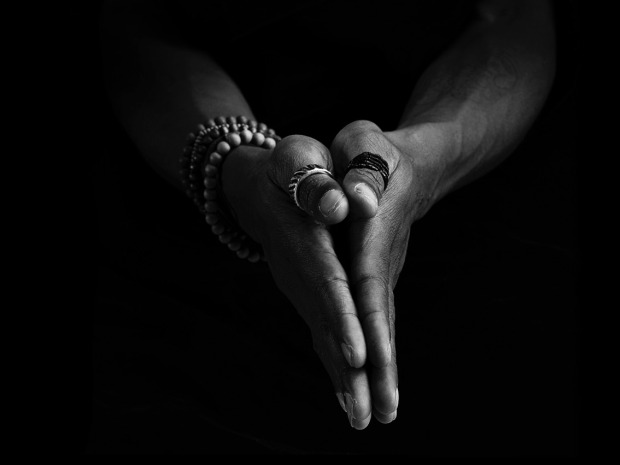
Peaceful hands. 645 Leaf Aptus II, 120mm focal length, 1/60s @ f/5.6.
Despite a busy work schedule, Weinstein sets himself a challenge every year to complete a personal project. By challenging himself, he strikes out in different directions, and personal work can lead to new work, and outlooks. It’s paramount as a commercial photographer to keep exploring and creating new bodies of work away from your hired commissions, he stresses. Last year his focus was on completing photographic studies of Australian native plants, which formed his next exhibition. This led to a commission from Australian Geographic magazine on the subject of seed collecting, and a limited edition of postcards and prints. The work also led to a hotel commission for display artwork.
In 2014 he exhibited “Marabastad 1988” at the Head-On Photo Festival. It was a retrospective of his thesis work from his college years, work documenting the township of the title in Pretoria. Despite this, he has not felt the urge to enter many competitions. In earlier days he won Gold and Silvers at the Ilford Profoto Awards and SPADA Industry Awards for an advertising Dulux Paints campaign. This year he wanted to experience the Australian Professional Photography Awards (APPA), entering the commercial and advertising section, and he won a Silver award. The judging, online streaming, and behind the scenes, was brilliantly done, he says.
Significantly, Weinstein explains, “I have decided to start printing my work more as this is where our images should eventually be appreciated. The longevity of archival print is also a factor for me.”
Industry connections
Beyond his own practice, Weinstein takes on the challenges facing the industry through work in its peak bodies, the Australian Institute of Professional Photography (AIPP) and the Association of Commercial & Media Photographers (ACMP). Recently, he facilitated their merger, remaining President of the latter, and he was elected to the board of the former.
“We’re complementing one another. There are many areas of photography. There’s a huge domestic market with wedding and portraiture, people specialising in school photography, in scientific, and in commercial advertising. So there are lots of different areas of speciality. I feel the institute is representing all photographers and not just one particular area. Also, with the organisations coming together, we’re far more effective helping students and colleges with their material because it’s coming from one source. It’s a far more effective way of negotiating with government about copyright, for instance.” He also negotiates a happy life-work balance. “I do find a balance. I’ve still got a good family life. I spend a lot of time with my kids, but I’m passionate about my work, and it’s very rewarding getting involved in the industry and it’s not for a monetary value.”
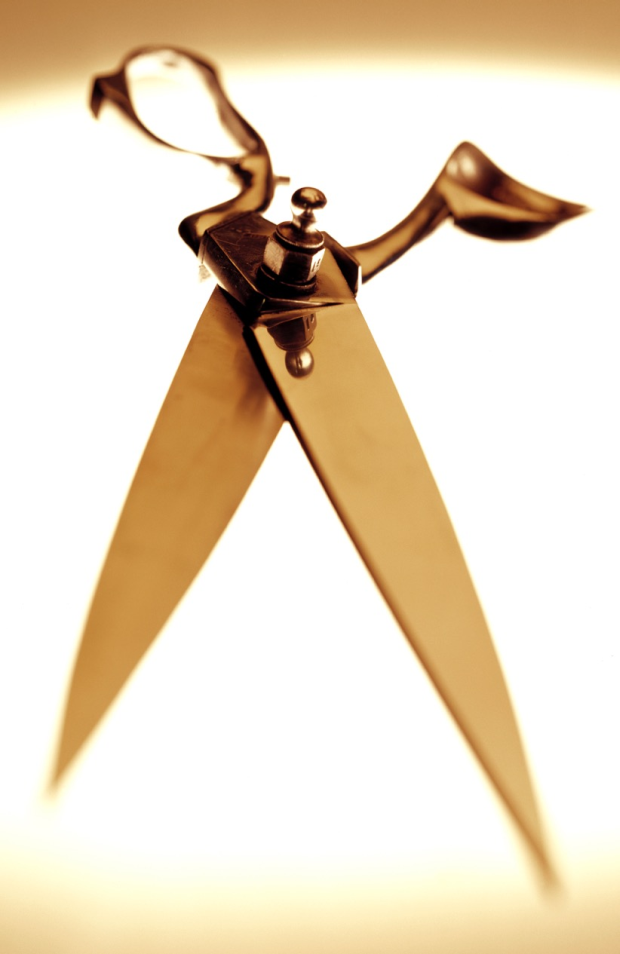
Tailors scissors. Sinar P2 4x5 Fuji film. Lens Sinaron 180mm.
Kids & animals
Since setting up his studio in Australia in 1995 Weinstein has worked for many clients on major advertising campaigns. He muses that contrary to the old adage, he has particularly enjoyed working with children and animals! “I have to say that two campaigns that come to mind were incredible experiences. One was photographing kids and babies for Kimberly-Clarke, for the Huggies diaper packaging. I’ve repeatedly done that work. The Carpe Diem is a fantastic agency to work with. The brief was to get these beautiful kids running at camera, full of expression, looking straight into the lens and smiling. Another job I loved was shooting cats and dogs for Bayer. Another major highlight was collaborating with John Cutler, a fourth-generation bespoke tailor, to produce images for his coffee-table book, ‘Making the Cut’. The limited edition launch and signing was held at the Rolls Royce showroom.
“It’s great to go shopping with the kids and see your images on breakfast cereal boxes and baby diapers or driving next to a bus that has your work, but the most rewarding projects for me have been in healthcare where my images can really make a difference in people’s lives. I have been so fortunate to work in many areas and disciplines and I have met some amazing people on my journey, from street kids, artists, and musicians to sport personalities and everyday people. Nelson Mandela and Malcolm Turnbull have been my most high profile subjects to date.”
Changing locations
As jobs and clients have changed, the ratio of studio to location work has changed as well. Historically it was about 80 per cent studio work. Now it is 60 per cent with the other 40 per cent including some international location work. “I enjoy both, for different reasons. On location, the unpredictable light and changing weather can offer amazing opportunities or make for a complete disaster. Location work will most often force you to be on site at first light until sunset. Twelve to fifteen hour days aren’t uncommon. The type of work you’re doing depends on where the photography takes place. A lot of traditional studio set ups like portraiture or catalogue fashion is often shot on location nowadays. For my jewellery and packaging it’s always studio based. The lighter equipment and lighting and the rise of hire facilities has changed the way we work. Studio work is more productive and controlled. You’re not affected by weather and any multitasking is easier. I have always had my own studio space or shared with other photographers, and going to work every day disciplines you to be productive and normalizes the working week.”
Documentary photography was a big part of his early career. Often he would not bring the camera out for quite a while until after he had chatted with the subject. Sometimes he would return to the same place regularly to build up a rapport with the locals. It is a different process to commercial work. You are taking an image, he explains, where you let the natural light, the natural environment form the image, select the perspective, and even influence your choice of lens. You need to know your equipment fairly well.
“I’m not a ‘long lens’ person. I like to put on a wider lens and go right up to someone and confront them, and ask if I can take their image. I’m not someone who does things at a distance. I like to approach my subjects. It’s a bit confrontational, but I’m OK with that. I think that’s respectful, to actually look someone in the eye, and ask their permission to do something. I love working with the older Rolleicords, and the view cameras where you do not have to put the camera up to your eye. Look, I think it’s horses for courses. You choose your equipment depending what’s best for the job. It’s different taking images when you’re in the studio, where you’re more making an image. You’re setting up your camera, and bringing all the elements in front of a lens. When you’re outdoors in a street environment, you’re looking at your environment. It’s a different approach..”
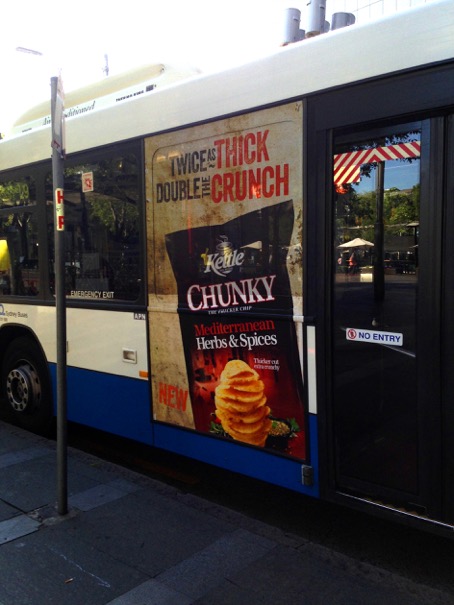
A bus with a Weinstein advert. He came across one of his commercial shoots on the side of a bus whilst wandering the city streets. He says this is a pleasant by-product of the commercial photographer’s world!
Weinstein sums up, “You have to have a dream, and a passion for photography, if you’re going to be in it. It’s not a half-hearted profession. You have to like people. You have to be good natured, and be happy to work under any condition, even when you’re ill, or unwell. It’s going to challenge you in every stage in your life. I don’t think you can ever relax as a photographer and say, ‘I’ve arrived. I’m good enough’, but it’s still very rewarding.”
Developing technique
Because he was travelling on his recent assignment, the need to avoid carrying weighty equipment made Weinstein highly selective with his kit. He took two 35 mm Canon bodies, a 1D X and a 5D Mk II, with a 35mm prime, an 85mm prime, and a 70-200mm zoom lens. His tripod was a Manfrotto 050 and head. For lighting and shaping he packed two Elinchrom ELC 500s, a Pro flash-head and a Ranger kit, stands, umbrellas, honeycombs, and a soft box. Other equipment included a MacBook Pro, iPad, a CamRanger which creates a Wi-Fi network, enabling the download of images to an iPad or iPhone, “a beautiful way to share images while you’re working”, battery chargers for everything, and two hard drives. It was all packed into Pelican cases and Think Tank bags. Overall, it was an arrangement much different to his more common studio shoots, and it was linked to a change in emphasis with his photographic career.
On technique, Weinstein says, “Decide what you want: motion, frozen or moving effect, and depth of field, great or shallow. That’s all you really have to set in the camera. Then it’s about lighting, composition, expression, which are all ‘out-of-camera’ considerations. Photography is an amazing art form in that it enables us to capture a sense of reality that our eyes don’t see. I encourage students and emerging photographers to explore shutter speeds first, and master very long, and short exposures. Play with light painting and at the other end of the scale try very fast exposures to freeze water. These always create interesting and unexpected results and really get the creative juices going, and it’s fun. I am working more with smaller apertures and I am always trying to find the sweet spot in my lenses. My workflow is mostly tethered, with the camera attached to a computer using Capture One software. When I shoot to a card, I import the RAW files into Capture One or occasionally process through Adobe Camera RAW. I love Bridge as a browser and do all my metadata and renaming in it. Processing and pixel editing I do in Photoshop. Lightroom is a popular program, but I don’t use it. I constantly try and up skill my processing and retouching workflow. Trainers like Guy Gowan have really taught me so much about channels, colour, and workflow. I do dabble a little in plug-ins like Alien Skin and Portrait Pro, but only for specific requirements.”
On portrait work, Weinstein says, “I like to research my subject before I meet them, if at all possible. We are often only given a few minutes to try and capture a unique characteristic of the person, so getting to know a little about their background and interests can start a conversation. Plan your first lighting set up and always make sure the equipment is charged and working correctly.”
The technology of photography has changed fundamentally since Weinstein started his career. He says, “When I left Pieter De Ras to start my own studio he gave me this piece of advice: buy yourself a fax machine and computer and always stay up on technology. That’s what I did. Six months later the mobile phone arrived on the market, and we all have been buying technology ever since. I think it’s really important to keep abreast of software and hardware and practice, and to up skill as much as possible. Our clients expect it of us. We are image professionals and we need to know what is happening in our marketplace and related professions.”











